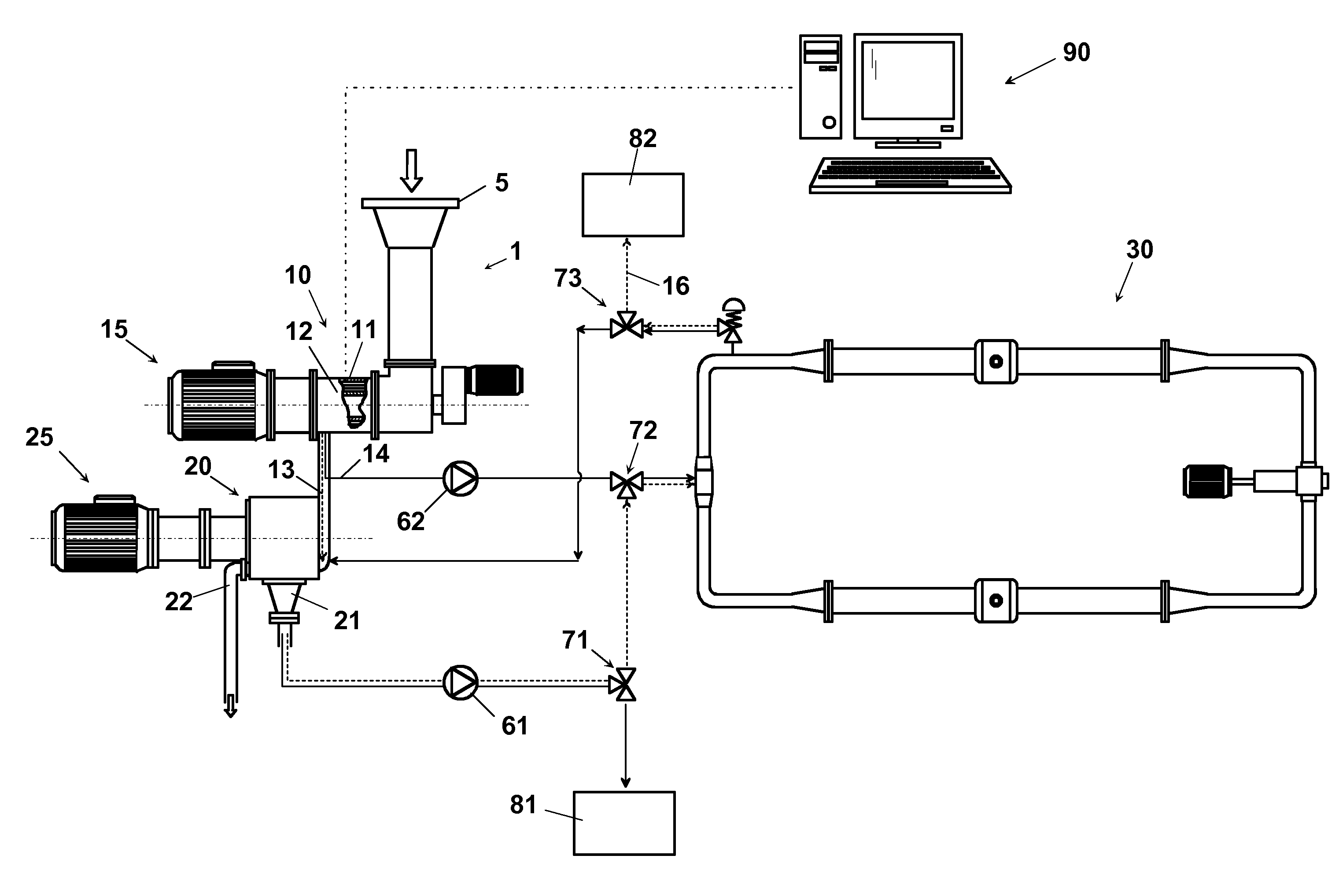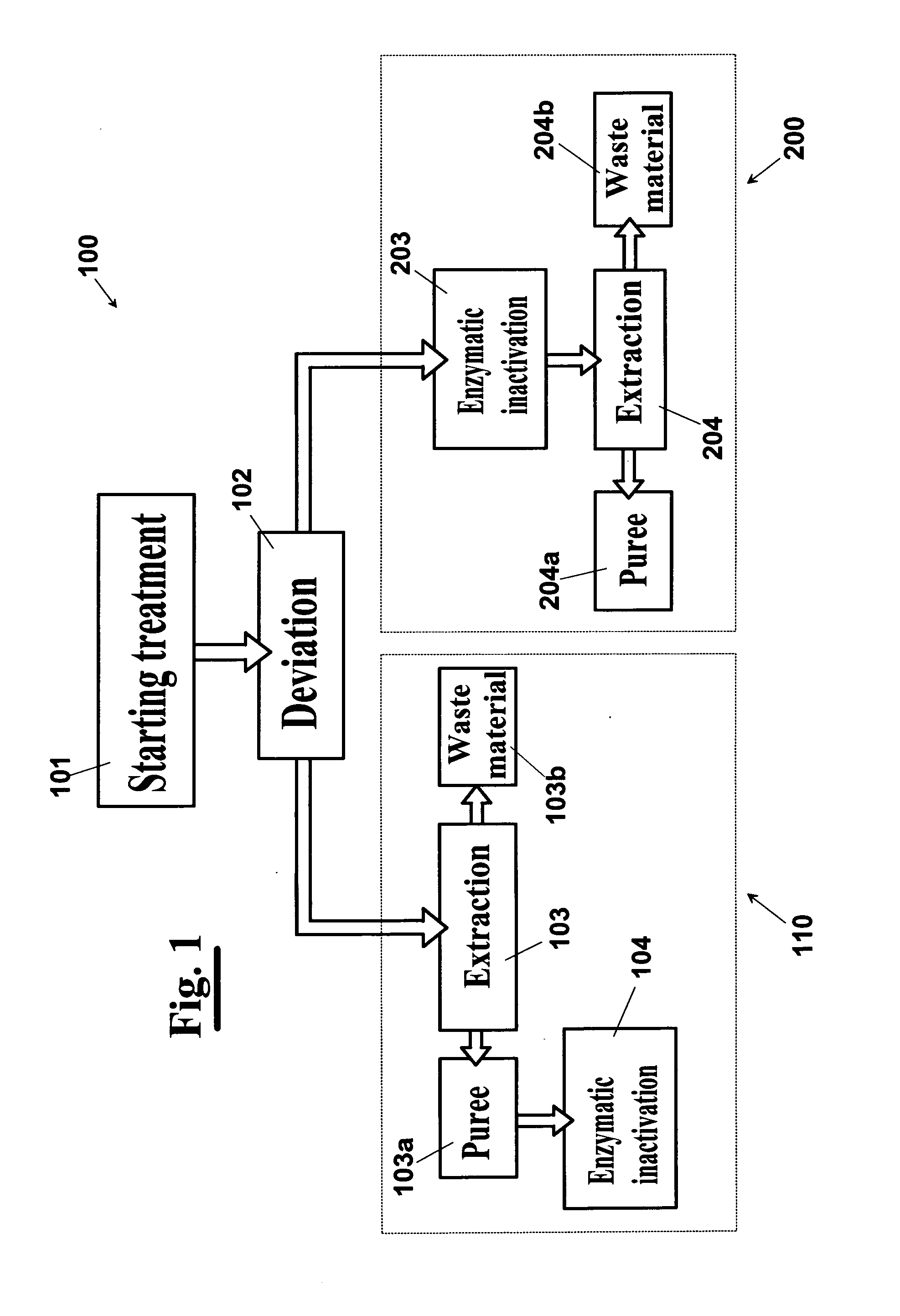Method and apparatus for extracting puree or juice from a vegetable or animal food
a technology for vegetable or animal food and extraction method, which is applied in the field of food industry, can solve the problems of wrong operation of measurement instruments, in particular flow rate sensors, and the risk of jamming of tubes and valves, and achieves the effects of reducing heating speed, reducing heating power, and prolonging the heating time of products
- Summary
- Abstract
- Description
- Claims
- Application Information
AI Technical Summary
Benefits of technology
Problems solved by technology
Method used
Image
Examples
Embodiment Construction
[0059]In FIG. 1 shows a block diagram 100 that depicts the main steps of the method, according to the invention, for extracting puree, or juice, from a starting product based on vegetable or animal food.
[0060]In particular, the method provides a starting treatment step, for example a softening step, of a food product of vegetable origin, such as fruit, or vegetables, obtaining a treated product, block 101.
[0061]A deviation step follows, block 102, during which the treated product is selectively directed towards a cold extraction, block 110, or towards a hot extraction, block 200.
[0062]If the treated product is directed towards a cold extraction, it follows firstly an extraction step, block 103, in which the treated product is separated into a main product comprising the puree, or the juice, block 103a and into a waste material, block 103b. The main product is then subjected to a following enzymatic inactivation step which provides quickly heating the treated product up to a determin...
PUM
 Login to View More
Login to View More Abstract
Description
Claims
Application Information
 Login to View More
Login to View More - R&D
- Intellectual Property
- Life Sciences
- Materials
- Tech Scout
- Unparalleled Data Quality
- Higher Quality Content
- 60% Fewer Hallucinations
Browse by: Latest US Patents, China's latest patents, Technical Efficacy Thesaurus, Application Domain, Technology Topic, Popular Technical Reports.
© 2025 PatSnap. All rights reserved.Legal|Privacy policy|Modern Slavery Act Transparency Statement|Sitemap|About US| Contact US: help@patsnap.com



